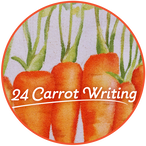 ~by Amanda Smith Lately, I have been thinking a lot about branding. Not only because we have been thinking, planning, and talking logo at 24 Carrot Writing (see the introduction post here) , but also because I have been working on my personal website. I am constantly considering how I want to present myself, and here at 24 Carrot Writing, while we come up with a lot of cool ideas, we always circle back to the question: “How does this fit in with our main directive?” So, what is branding and how does it fit onto a writer’s life? Branding is the ways in which a person or company establishes their image. It is the promise they make to their customer and the thing that makes them recognizable. Branding includes core values, interactions, slogan and logo. Anything a business puts out into the world, including websites or promotional materials, communicates its brand.  A logo is the foundation for brand recognition. Logos usually consists of text and image, although some logos, like Nike or McDonald’s, have become so recognizable that the text is often omitted. When logos are used correctly, they represent a business’ identity and build trust. But why is all this business jargon important for writers? Branding is unavoidable. Exposure from your work, blogs, social media, interviews, and podcasts all communicate your brand as a writer. As your public image is being formed anyway, you can be proactive in shaping it. Branding is ongoing and evolving, and you should play an active role in the message you communicate to your readers. So, as you shape your brand, consider the following:
In the world of platform building and author websites, a logo or badge can be useful to show your affiliation with a particular online group or challenge. Those of us who have participated in 12x12, or Storystorm (previously PiBoIdMo), or NaNoWriMo proudly display those badges on our websites. Displaying logos or badges can be an indication of how active one is within the writing community, and that in itself also helps build one's individual brand. You are your brand. Moving forward, what strategies will you use to mold your brand?
0 Comments
Today, 24 Carrot Writing is thrilled to reveal our logo, designed by graphic designer Russ Nemec. Our brand is built around goal-setting. 24 Carrot Writing encourages you to set monthly writing and craft goals, and to reward yourself with meaningful carrots along the way as motivation to keep moving forward. Our audience is writers of children’s books, and so, even though we are serious about those goals, we embrace playfulness. Are you intentional about setting and attaining writing goals? Join our Facebook group, browse our Writing Goals tag, download a 24 Carrot Writing Goal Worksheet, and earn those carrots! If you consider yourself part of the 24 Carrot Writing community, or have contributed to our website, we invite you to download our logo for your website. Join us on Wednesday for a post about branding for writers.
 Guest Post by Author Monica Tesler The new year is upon us, and my social media feeds are overflowing with motivational posts about goals. Personally, I don’t typically buy into the new year hype. I figure if there’s something I want to accomplish, why wait for January 1 to get started? This time around, though, I’m on board. I’m just about to send my draft of the fifth and final book in the Bounders series to my editor, and it feels like a really big deal. Bounders was the book that got me a literary agent and then a publisher. So without a Bounders deadline on the horizon, it feels like starting from scratch in a way. In other words, it’s a great time for some new goals! There are all kinds of approaches to goal accomplishment. I developed my approach in an entirely different setting. Before jumping into the writing business, I worked as an attorney. In fact, for many years I did both. I’ll share what’s worked for me goal-wise stretching all the way back to the Monica as a young lawyer days. Give my approach a try, if you’d like, but you’ll probably need to tinker around a bit to find the exact right fit for you. The most important thing is that you find an approach to goal accomplishment that you use consistently and can measure your success over time. 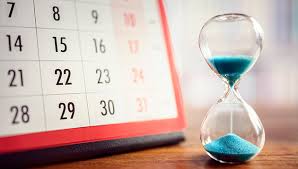 In my view, talking about goal accomplishment is really talking about time management. Reaching a goal is nothing more than a reflection on how you’ve chosen to use your time in the days, months, or years leading up to that accomplishment. So as soon as you set your goal, you need to focus on how to spend your time to accomplish it. That’s where time management’s best friend comes in to play: task management.  It’s critical to understand the difference between goal setting and task management. Goals are big and new years-y. Examples of writing goals may be getting a literary agent, finishing a manuscript, or to take one of my own goals, completing a proposal for a new novel. If you placed any of those goals on your to-do list, though, odds are you wouldn’t get too far. Why? The goals need to be broken down and translated into manageable (read: not overwhelming) tasks. Let’s take getting an agent for example. Do you have a completed manuscript? If not (and you’re not an established author or a nonfiction author with a platform), this may not even be a realistic goal for you in the near future. But let’s say you’ve written and revised your book, received peer feedback, and think you’re ready to send it out in the world in search of agents. Then what? In my view, here is the first stage of that goal broken down into steps. Research agents using online tools such as query tracker, reviewing acknowledgements from published books, checking agency websites, etc. Draft a query letter and receive peer feedback, repeat, repeat, repeat. Set up a spreadsheet or other way to track queries and responses. Determine a query method (e.g., batch querying). Send out first wave of queries, making sure you’ve followed each respective agents’ instructions exactly. Wow! See how many discrete tasks were in that paragraph alone? And that only gets you to the first wave of queries leaving your inbox. You still could be a long way from getting an agent. Personally, I’ve received well over a hundred query rejections. So odds are you’re going to need to go back to the drawing board with query revisions and agent research. 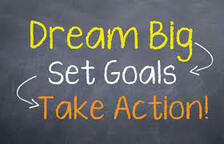 This isn’t a blog post on querying, so I’ll leave it at that. The point is that it’s great to have big goals. In fact, I’m such a fan of big goals, I post them prominently on a large bulletin board in my office. On the practical side of things, though, each goal needs to be broken down into small, incremental parts and placed on functional to-do lists. That’s how you move from goal setting to task management. I remember having “research agents who rep middle grade sci-fi” on my to-do list. When I checked it off, I felt confident that I’d moved closer to my goal of getting an agent. That’s the key, right? Actually getting things done and feeling accomplished. So first, I break down my goals into incremental tasks. Next, I estimate how much time each task will take. Then the tasks make their way into my task management system. Here are the basics of my task management system. I generate monthly to-do lists that are separated by category. Currently, my categories are writing, book business, kids (as in my own), and life/domestic management. Writing tasks and most of the book business tasks can be tracked back to one of the goals on my bulletin board. I further break down my to-do lists at the beginning of each week (i.e., a weekly list) and then again at the beginning of each day. My daily lists typically have no more than 4-6 entries, and I more often than not check every item off by the end of the day. 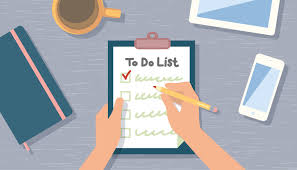 If my approach resonates with you, give this a whirl. Set 2-4 writing/book business goals, then spend some time breaking each goal into tasks. For each task, indicate approximately how long the task will take and determine a sensible task order. Assess your task lists and how they realistically match up against your other time commitments (family, domestic, other work, self-care, etc.), then determine what you think you can reasonably accomplish in one month and generate a monthly to-do list. If you’d like, you can further streamline and create weekly and daily lists like I do. At the end of the month, make sure you take some time to assess how you fared with your to-do list. Don’t worry if everything doesn’t get done. Figuring out how long things take (not to mention assessing how you’re actually using your time) is a process. The important thing is that you’re able to track your progress. Good luck! And happy writing! 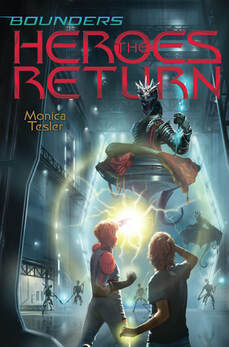 Monica Tesler is the author of the Bounders series, a middle grade science fiction adventure series from Simon and Schuster. The most recent title in the series, The Heroes Return, released in December 2018. Monica lives outside of Boston with her family. If you'd like to learn more about Monica and her books visit her at her website at monicatesler.com, on Twitter @monicatesler, on Instagram @monicatesler or on Facebook /monicateslerwrites . If you would like to purchase the most recent Bounders series book, The Heroes Return, use these links: Amazon/The Heroes Return, Barnes & Noble/The Heroes Return, or IndieBound/The Heroes Return.  Every year, the 24 Carrot Writing crew shares our yearly Writing and Craft goals. We hope that in reading our plans for 2019, you may find a starting point for your own 2019 goal list. We also feel strongly that writing goals down and sharing them builds accountability and leads to accomplishment. We encourage you to share your 24 Carrot Writing Goals on our Facebook page (look for a pinned post about goals) or in the comments below, and use this goal tracking sheet. While the 24 Carrot Writing approach emphasizes setting Writing Goals and Craft Goals, you will notice that Amanda and Kelly have added sections. Amanda finds that adding Submit as a separate header allows her to track and achieve her submission goals. Kelly is focusing on connecting with the KidLit community in 2019 and has separated out Community as a header so she can be sure to focus on those goals. Start with the framework of setting Writing Goals and Craft Goals and then feel free to adjust your goal list so that it works for you. We hope you set your 2019 goals, use the 24 Carrot Writing method to hit your targets, and find inspiration and motivation in our blog throughout the year. And don't forget to reward yourself with a special carrot every month to celebrate your progress. Francine
Writing:
Craft:
Amanda Be intentional Write:
Submit:
Craft:
Annie Writing:
Craft:
Kelly Writing:
Community:
Craft:
Add your own 2019 Goals in the comments section! |
Peruse blogs for advice and tips from KidLit creatives.
Categories
All
Archives
April 2024
Click to set custom HTML
Click on the RSS Feed button above to receive notifications of new posts on this blog.
|
||||||
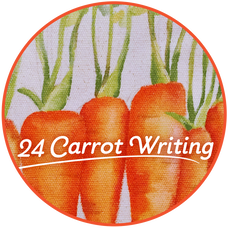
 RSS Feed
RSS Feed